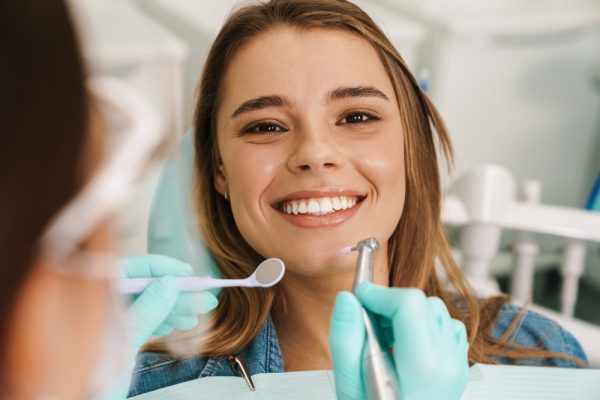Healthy Smiles Begin with General Dentistry Services in Tuckerton, NJ

General dentistry forms the backbone of long-term oral health. It includes everything from preventive care and routine cleanings to cavity repair and gum disease treatment. Whether you’re a busy parent looking for a family-friendly dentist or a retiree seeking gentle care close to home, we offer personalized solutions that meet your needs. To experience exceptional dental care, contact our Tuckerton dental office by calling (609) 296-1007.
Why Families in Tuckerton Trust Dr. Ronald Petrosky
There’s a reason patients throughout Tuckerton, Little Egg Harbor, and Manahawkin choose Dr. Petrosky for their general dentistry needs:
- Fellow & Master of the Academy of General Dentistry (FAGD, MAGD) – Dr. Petrosky has earned both the Fellow (FAGD) and Master (MAGD) distinctions from the Academy of General Dentistry (AGD)—a rare achievement that reflects his lifelong dedication to continuing education, clinical excellence, and comprehensive patient care. These honors are only awarded to dentists who complete hundreds of hours of advanced training across all disciplines and serve as mentors and leaders in the dental community.
- Experienced, Compassionate Care – Dr. Petrosky brings decades of hands-on experience and a calming chairside manner to every visit.
- All-in-One Dental Office – We offer preventive, restorative, and emergency services under one roof.
- Advanced Technology – Our digital tools ensure safer diagnostics and more comfortable treatments.
- Patient-Centered Approach – Your health goals, comfort, and budget are always our top priorities.
Looking for the top dentist in Tuckerton? We invite you to experience the Tuckerton Dental difference.
What Is General Dentistry?
General dentistry covers the diagnosis, prevention, and treatment of oral health issues. Think of your general dentist as your primary care provider for your teeth and gums. By visiting regularly, you can stay ahead of problems like tooth decay, gum disease, and oral infections before they progress.
At Tuckerton Dental, we focus on building long-lasting relationships with our patients. Dr. Petrosky takes the time to explain treatment options clearly and ensure you feel confident about your care.
General Dentistry Services Offered at Tuckerton Dental
At Tuckerton Dental, we offer a full range of general dentistry services to help you maintain excellent oral health at every stage of life:
Preventive Dentistry
- Dental Cleanings & Exams
- Fluoride Treatments
- Dental Sealants
- Oral Cancer Screenings
- Custom Night Guards
Restorative Dentistry
- Tooth-Colored Fillings
- Dental Crowns & Dental Bridges
- Root Canal Therapy
- Full & Partial Dentures
- Emergency Dental Treatment
Gum Health & Periodontal Care
- Scaling and Root Planing
- Periodontal Maintenance
- Gum Disease Management
From your child’s first dental visit to restoring adult smiles, we’re here to provide care you can count on.
What to Expect During a General Dental Visit

- Comprehensive Oral Exams – Dr. Petrosky will assess your teeth, gums, bite, and jaw to detect any signs of issues early.
- Professional Cleanings – Our hygienists remove plaque and tartar buildup that brushing can’t reach.
- Digital X-rays – Low-radiation digital imaging reveals problems beneath the surface, such as bone loss or impacted teeth.
- Oral Cancer Screenings – We check your tongue, throat, and soft tissues for early signs of oral cancer.
- Customized Treatment Plans – If we discover concerns, we’ll create a clear, affordable plan to restore your oral health.
We believe that prevention is the best medicine, and our Tuckerton team is here to help you avoid costly procedures down the line with proactive, thorough care. To schedule your appointment with our Tuckerton dentist, contact Tuckerton Dental by calling (609) 296-1007.
Frequently Asked Questions
We recommend visiting our dentist in Tuckerton, NJ, every six months for a cleaning and check-up. These visits help detect problems early, keeping your smile healthy and minimizing future costs.
Absolutely. At Tuckerton Dental, we offer emergency dental services for issues like toothaches, chipped or broken teeth, infections, or lost fillings. Call us right away for same-day or next-day appointments.
Yes! We welcome patients of all ages. Dr. Petrosky offers gentle pediatric care as well as senior-focused treatments like dentures, gum care, and dry mouth relief.
We work with most major dental insurance plans and offer flexible payment options for uninsured patients. Our team will help you understand your coverage and make the most of your benefits.
Tuckerton’s Go-To Dentist for Comfort, Quality, and Care
At Tuckerton Dental, we make it easy and comfortable to stay on top of your dental health. Whether you need a routine checkup, a cavity filled, or a second opinion, Dr. Ronald Petrosky is here for you.
We’re proud to serve families across Tuckerton, West Creek, and Little Egg Harbor with top-quality care and personalized attention. If you’re searching for a “dentist near me” who prioritizes your comfort and long-term wellness, contact our general dentist in Tuckerton, NJ, by calling (609) 296-1007.